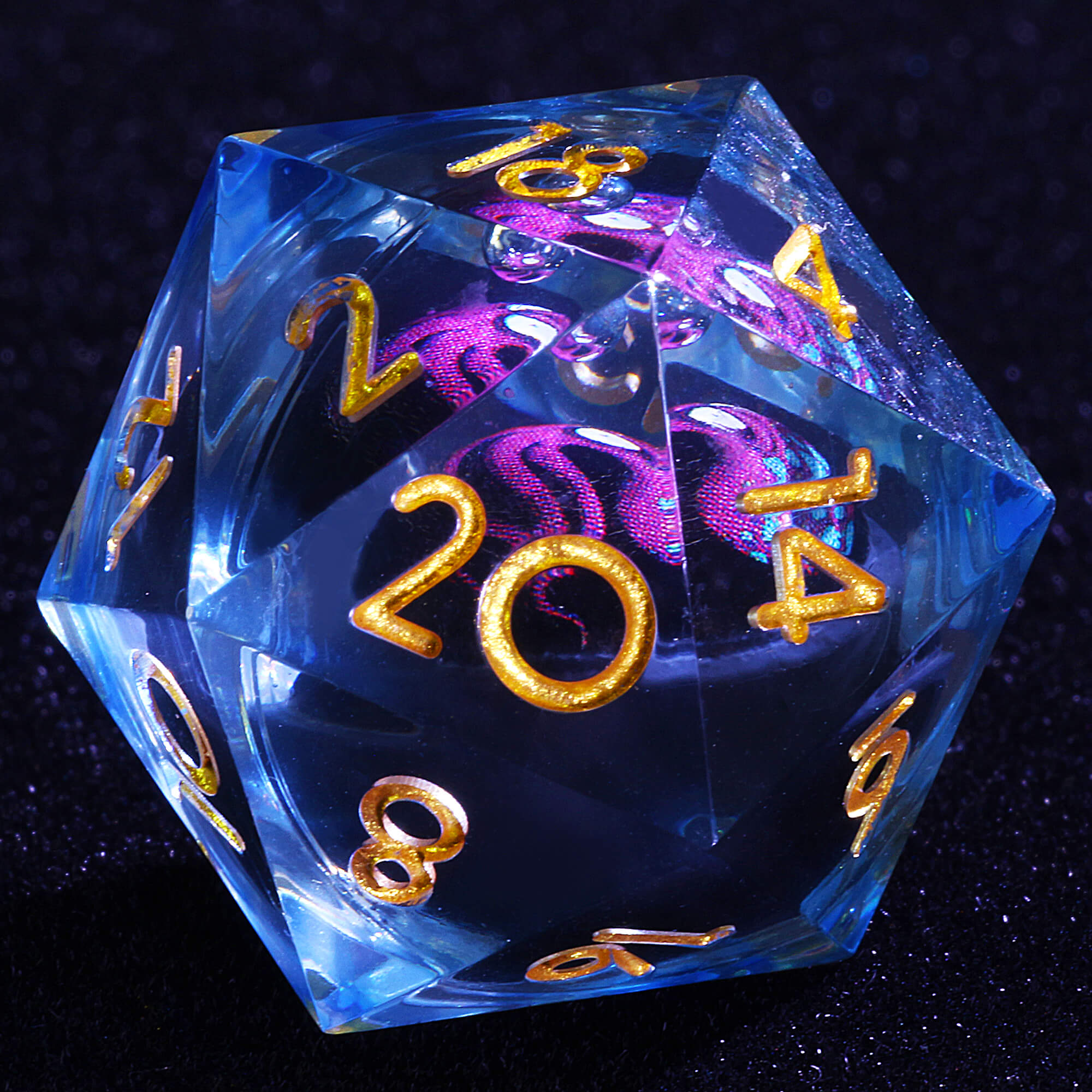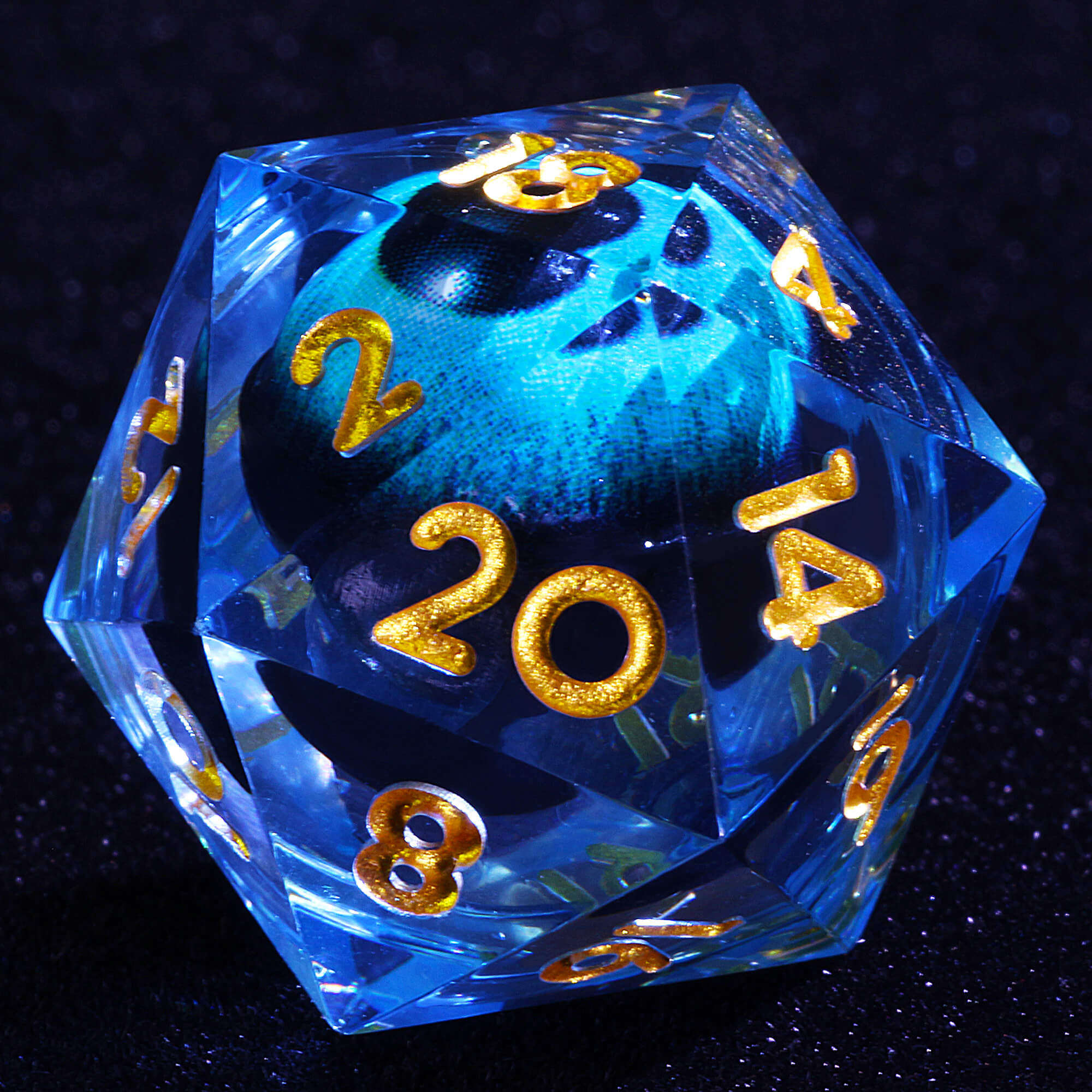Liquid core dice are undeniably mesmerizing. Their shifting, swirling interiors capture the eye and add a touch of magic to any tabletop game. But beneath their stunning appearance lies a question that many D&D players ponder: Are these dice balanced? Let's break it down.
What Are Liquid Core Dice?
Before diving into the specifics of balance, it's essential to understand what liquid core dice are. Unlike traditional solid dice, liquid core dice feature a hollow center filled with liquid, often accompanied by small floating inclusions like glitter, mini-figurines, or other decorative elements. These internal components create a dynamic visual effect as the dice roll, adding an extra layer of flair to your gaming experience.
Encased in a transparent resin shell, liquid core dice maintain the typical polyhedral shape you'd expect from D&D or other tabletop RPG dice sets. Their unique design has made them popular among players seeking something visually striking.
The Pros and Cons of Liquid Core Dice
Pros:
- Aesthetic Appeal: The swirling liquid and floating inclusions create a captivating visual effect that adds a touch of magic to your gaming sessions, making each roll a spectacle.
- Conversation Starter: When you bring a liquid core dice set to the table, they're bound to spark curiosity and admiration from fellow players, making them a great conversation piece.
- Collectible Value: Due to their unique design, liquid core dice often hold more value as collectible items. Their distinct look makes them a sought-after addition to any dice collection.
Cons:
- Cost: Liquid core dice generally have a higher price tag than traditional dice due to the complex manufacturing process and the visual effects involved; this could be a consideration if you're on a budget or looking to expand your collection without breaking the bank.
- Limited Theme Options: While liquid core dice are visually unique, they might not offer the same wide range of thematic designs as other resin dice or metal dice. The focus on the liquid effect can limit the variety of colors, inclusions, or intricate designs available; this could be a drawback for players who prefer dice sets that match specific themes or characters.
The Physics of Liquid Core Dice: Rolling and Randomness
Now, let's address the elephant in the room: balance. When it comes to liquid core dice, a common concern is whether the liquid, internal inclusions or even air bubbles inside the dice affect their balance. The fear is that these elements could bias the dice towards specific faces, thereby affecting the randomness of rolls. However, this concern might be less significant than it seems.
How Liquid and Inclusions Behave: As the die rolls, the liquid and inclusions inside do not stay fixed. They continue to move, swirl, and shift, preventing any specific face from being consistently favored. This dynamic movement ensures that no particular side becomes heavier or lighter in a way that would significantly affect the roll's outcome.
As long as the dice are rolled with sufficient force to tumble properly, the internal components—whether liquid, inclusions, or air bubbles—won't have a noticeable impact on the randomness of the outcome; this makes liquid core dice as fair as traditional solid dice in most tabletop gaming scenarios.
The Importance of a Good Roll: The key to ensuring fairness is how the dice are rolled. Suppose a liquid core die is given a weak or uneven roll. In that case, it might not tumble enough, which could theoretically allow the liquid or inclusions to settle in a way that might affect the outcome. But with a proper, vigorous roll, the internal dynamics of the liquid core ensure that the dice perform just as well as any other polyhedral dice in terms of randomness.
Do Air Bubbles Affect Balance?
A common concern with liquid core dice is the presence of air bubbles within the liquid. These bubbles can add to the dice's aesthetic appeal but might also raise questions about their impact on balance.
The Role of Air Bubbles: Air bubbles are typically tiny and move around as the die rolls. Because they are lighter than the liquid, they often rise to the top, but like other inclusions, they do not stay fixed in one place during a roll. This movement means that air bubbles are unlikely to bias the dice toward any particular face consistently.
In short, while air bubbles might seem like they could skew results, their influence is minimal and negligible for the average tabletop gaming session.
The Saltwater Test: Why It Doesn't Work Here
The saltwater test is a common method for testing the balance of traditional dice. In this test, you dissolve salt in water until your dice float, then observe which faces tend to rise to the top. However, this method doesn't work well with liquid core dice.
Why Not? The internal liquid and inclusions in liquid core dice alter the density distribution, making the results of a saltwater test unreliable. The fluid movement inside the dice can cause inconsistent results, leading to false conclusions about balance.
For liquid core dice, a better approach is to observe their performance over a large number of rolls. Suppose specific numbers appear with significantly higher frequency. There may be an issue in that case, but this is rare in well-manufactured dice.
The Verdict: Are Liquid Core Dice Balanced?
After weighing all the factors, the conclusion is that liquid core dice, like most other dice, are generally balanced enough for casual tabletop gaming. While visually striking, the internal liquid and inclusions do not significantly impact the fairness of rolls in most scenarios.
However, if you're a player who demands absolute precision—for instance, in a highly competitive environment or a game with strict rules—you might want to stick to solid, precision-engineered dice like those used in casinos. For most D&D sessions and other tabletop games, though, liquid core dice are a fun, functional, and fair choice that adds a touch of magic to every roll.































